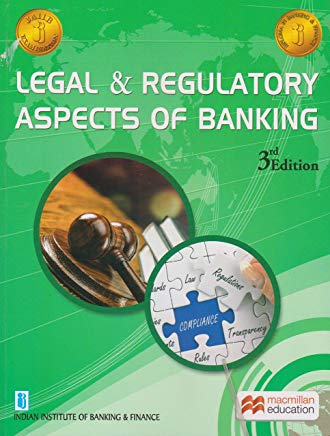JAIIB PPB Unit 4 - Role of Money Markets, Fixed Income Markets, Forex markets and FEMA (Year: 2019)
1. Money markets play a key role in banks’ liquidity management and the transmission of monetary policy.
2. In normal times, money markets are among the most liquid in the financial sector.
3. By providing the appropriate instruments and partners for liquidity trading, the money market allows the refinancing of short and medium-term positions and facilitates the mitigation of your business’ liquidity risk.
4. The banking system and the money market represent the exclusive setting monetary policy operates in.
5. A developed, active and efficient interbank market enhances the efficiency of central bank’s monetary policy, transmitting its impulses into the economy best.
6. Development of the money market smoothes the progress of financial intermediation and boosts lending to economy, hence improving the country’s economic and social welfare.
7. Therefore, the development of the money market is in all stakeholders’ interests: the banking system itself, the Central Bank and the economy on the whole.
8. "Money Market" refers to the market for short-term requirement and deployment of funds. Money market instruments are those instruments, which have a maturity period of less than one year.The most active part of the money market is the market for overnight call and term money between banks and institutions and repo transactions. Call Money / Repo are very short-term Money Market products. The below mentioned instruments are normally termed as money market instruments:
- Certificate of Deposit (CD)
- Commercial Paper (C.P)
- Inter Bank Participation Certificates
- Inter Bank term Money
- Treasury Bills
- Bill Rediscounting
- Call/ Notice/ Term Money
9. Government Securities are issued by the Government for raising a Public loan or as notified in the official Gazette.
10. They Consist of Government Promissory Notes, Bearer Bonds, Stocks or Bond held in Bond Ledger Account.
11. They may be in the form of Treasury Bills or Dated Government Securities.
12. Government Securities are mostly interest bearing dated securities issued by RBI on behalf of the Government of India.
13. GOI uses these funds to meet its expenditure commitments. These securities are generally fixed maturity and fixed coupon securities carrying semi-annual coupon. Since the date of maturity is specified in the securities, these are known as dated Government Securities.
14. Features of Government Securities
- Issued at face value.
- No default risk as the securities carry sovereign guarantee.
- Ample liquidity as the investor can sell the security in the secondary market.
- Interest payment on a half yearly basis on face value.
- No tax deducted at source.
- Can be held in Demat form.
15. Corporate bonds are debt securities issued by private and public corporations.
16. Companies issue corporate bonds to raise money for a variety of purposes, such as building a new plant, purchasing equipment, or growing the business. When one buys a corporate bond, one lends money to the "issuer," the company that issued the bond.
17. In exchange, the company promises to return the money, also known as "principal," on a specified maturity date. Until that date, the company usually pays you a stated rate of interest, generally semiannually.
18. While a corporate bond gives an IOU from the company, it does not have an ownership interest in the issuing company, unlike when one purchases the company's equity stock.
19. An interest rate swap (IRS) is a liquid financial derivative instrument in which two parties agree to exchange interest rate cash flows, based on a specified notional amount from a fixed rate to a floating rate (or vice versa) or from one floating rate to another.
20. An interest rate future is a financial derivative (a futures contract) with an interest-bearing instrument as the underlying asset. It is a particular type of interest rate derivative.
21. LIBOR or ICE LIBOR (previously BBA LIBOR) is a benchmark rate that some of the world’s leading banks charge each other for short-term loans.
22. It stands for Intercontinental Exchange London Interbank Offered Rate and serves as the first step to calculating interest rates on various loans throughout the world.
23. LIBOR is administered by the ICE Benchmark Administration (IBA), and is based on five currencies: U.S. dollar (USD), Euro (EUR), pound sterling (GBP), Japanese yen (JPY) and Swiss franc (CHF).
24. It serves seven different maturities: overnight, one week, and 1, 2, 3, 6 and 12 months. There are a total of 35 different LIBOR rates each business day. The most commonly quoted rate is the three-month U.S. dollar rate.
25. The Mumbai Interbank Offered Rate (MIBOR) is calculated everyday by the National Stock Exchange of India (NSEIL) as a weighted average of lending rates of a group of banks, on funds lent to first-class borrowers.
26. It is the interest rate at which banks can borrow funds, in marketable size, from other banks in the Indian interbank market.
27. The MIBOR was launched on June 15, 1998 by the Committee for the Development of the Debt Market, as an overnight rate.
28. The NSEIL launched the 14-day MIBOR on November 10, 1998, and the one month and three month MIBORs on December 1, 1998.
29. Since the launch, MIBOR rates have been used as benchmark rates for the majority of money market deals made in India.
30. Foreign Exchange Management Act (FEMA), 1999 is applicable-
- To the whole of India.
- Any Branch, office and agency, which is situated outside India, but is owned or controlled by a person resident in India.
JAIIB Study Material
| JAIIB Paper 1 Study Material |
| JAIIB Paper 2 Study Material |
| JAIIB Paper 3 Study Material |


